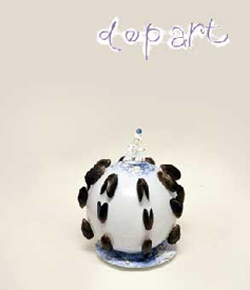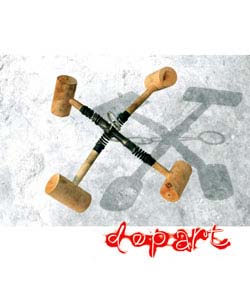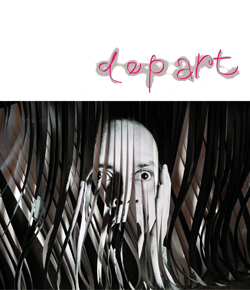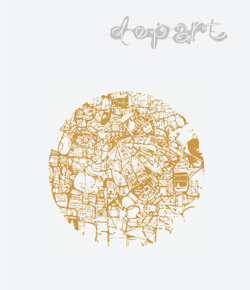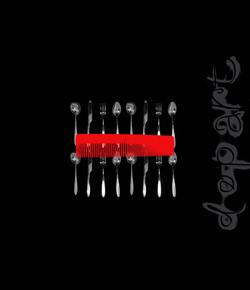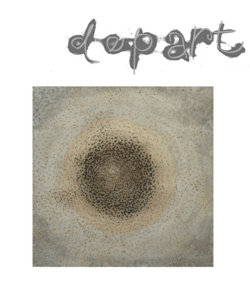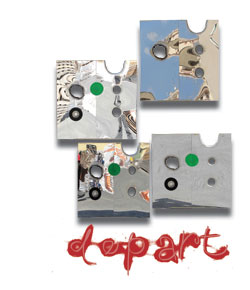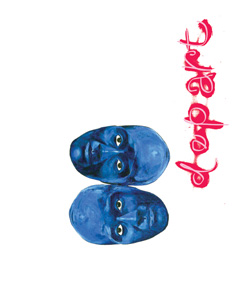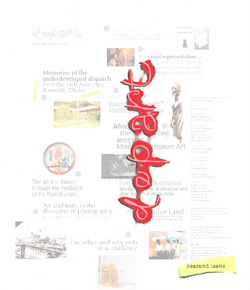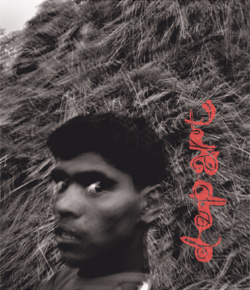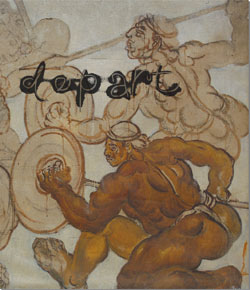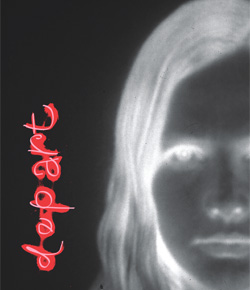Features
Lalon's legacy and everything after…
A critique of Shudhir Chakrabarty's position
'He pointed out that individual experience was partial and finite and therefore could not embrace the fullness of reality.'
– Paul Brunton, quoting Hegel in his book The Hidden Teaching beyond Yoga
Of contexts and (dis)positions

Through an erroneous oppositional framework, Shudhir Chakrabarty, whose research on Lalon has unquestionably led to some quality resources, in his book 'Braatya Lokaayato Lalon', characterizes the thinker as not only an 'atwa magna' or self-absorbed 'individual' but also a 'renegade' while attempting to contextualize the utterances through which Lalon appears. As a researcher, he has closely examined the sects given to antinomianism in Bengal, providing detailed accounts of what many including Chakrabarty himself refers to as 'gujya'(esoteric) shadhana while trying to unravel Lalon's narrative deploying dichotomies such as rural-urban, individual-collective, faith-reasoning, scriptural-extrascriptural, and so forth.
In discussing the ontologico-epistemic structure of the Lalonainan thought patterns, linked to myriad antecedents, Chakrabarti rightly situates the bard. 'Tantrik Shhojia and Boishnab Shahojia gist of knowledge melded with Sufi dialectics to form a compound informing the Baul songs,' affirms Chakrabarti (p 82), yet the new 'subjectivity' Lalon inaugurates by reasserting previous postulations simply remains overshadowed by a circumscribed frame around the antinomy of shariotee (mainstream) and bedatee (renegade) Islam.
Chakrabarty seems to run aground while navigating Lalon's site by investing it with many a false assumption while trying to connect him to Bauls and Fakirs of different stripes. The Lalon who reframes the 'being' from within 'the field of culturally viable subjects,'1 in relation to his antecedents to renew the discourse on subjectivity, seems to elude the otherwise well equipped researcher. Well known for his zeal for Lalon and the Baul way of life, Chakrabarty keeps banking on his dredged materials in all the right places, but fails to attend to Lalon's 'belief system' by relying on the false opposition between mainstream religion which is represented by hard-line maulanas, and subaltern beliefs whose proponents, he believes, have always been engaged in esoteric practices.

Deeper into his text, in page 218 to be precise, Chakarabarty posits that Lalon's knowledge is first and foremost a 'faith', whereas several pages earlier, in the chapter 'Eki Aajab Kaarkhaana', he weighs his argument on a link he establishes with erswhile Nadia's 'nabo naye' or 'new ethics' which the Bahminic pundits and even the maulanas given to sophistry were trying to re-establish in the eighteenth century Bengal– such allegiance to a culture of polemics lead, in his word, to a climate of jooktee, or 'reasoning'.
Lalon, without a doubt, is an individual; but a person who has been liberated from the allusive notions premised on claims to identity – be that in relation to 'individualism' or 'nationalism', the latter being attached to the collective as a corollary of such a category.
As for Chakrabarty's oft-quoted book, on encountering it, one is faced with some valuable historical accounts of Lalon; while on the other hand, to the detriment of the quality of his own theoretical foci on Lalon's thoughts, the book comprises some obvious and some not so obvious false notions on Lalon's position on 'being' and the place of the being in the world. Displaying a marked tenacity to overturn mainstream religions from their erstwhile perches, Chakrabarty constructs a Lalon who is seen as informed of the modern-day drift towards reasoning and secularization, or so it seems as the eighteenth century bard and thinker has been made to inhabit a discernible 'historical space' wherein a number of 'modernized' individuals with their 'forward-looking' ideas exert some measure of influence on Lalon through actual communiqués. Thus, like all other urban researcher, he too uses his tools to dredge history other than the texts Lalon left behind, offering but a selective reading of the original songs.

The rising bourgeois social elite – a self-conscious minority – too, has somehow managed to influence Lalon, he notes. Educated in the urban modern institutions, they were the denizens, according to Chakrabarty, of the modern age, emerging as they did in this clime in the second half of the eighteenth century were responsible for a new, evolving society where 'a subterranean stream of logical thinking became palpable'.
In the maiden chapter of his book, he advances on his thesis by conjecturing that Lalon had apparently enriched himself through interactions with the educated moderns. Before even venturing into Lalon's songs where his ideas are broached, Chakrabarty makes a passing claim, 'He [Lalon] used to visit the estate of the Tagores. From the fact that Jyotirindranath executed his portraiture in a sketch we may conclude that between the two there transpired some exchanges of higher thoughts on theology.' And from this Chakrabarty draws his conclusion about how synergic Lalon's position was, and in generating new thoughts how he resorted to experimentation with 'boldness', 'without fear'. Lalon, in all probability, grew up in the tradition of the Sufi fakir. He was mentored by Shiraj Shai, one of the murshids, famous in his time for his dialectics and axioms.
Chakrabarty's book proposes a number of likely candidates from the pool of the urban educated who influenced Lalon: Mir Mosharrraf Hossain, Kangal Harinath, Shibchandra Bidyarnab et al. The writer points out, Lalon had the opportunity to 'exchange ideas with and elaborate on the discourse,' on nothing other than what we come to know again as 'theology'.
The branch of thought in focus, framed under the category of 'theology', is anchored in the Western tradition which abstractly deals with 'gnosis', or the knowledge of divinity. As such, it fails to locate the being in its circuits of existential reality and the experiential dimensions embedded in that reality. By contrast, for Lalon the 'being' is situated in a relational diagram where the 'materialistic' is aligned with the 'rhetorical', the 'vocative/linguistic' is overlapped with the 'actual/somatic'. Therefore, in Lalon, being-framing and being-interpretation lead to consequences whereupon the social self and the individual self appear closest to the self and the being. For, the body in Lalon is conceived as 'body politic', as has been encapsulated by Farhad Mazhar, in his dialogue with Depart in the very first issue published in January, 2010.
One must build on such a 'fraught idea', where lies the very conceptual germ which Lalon injects into the social body. The new 'subjectivity' through which a departure from the previous ontologico-epistemic positions had been scripted by Lalon, who supposedly lived between 1774 and 1890 (there are no historical records to confirm his date of birth), is the subjectivity that emerges through 'somatic body politic'. Knowledge and other forms of projections and negotiation of the material conditions, thus, reside in the body as do memory, history and culture in linguistic and extra-linguistic manifestations.
The most radical position that Lalon casts through his songs easily embraces the concept of 'dwaito-odwaito', eradicating the mind-body dichotomy that many of the Bengali modern thinkers and literati, including Rabindranath Tagore, were enamoured of.
The spatial/contextual reading

Lalon's system is often erroneously dubbed as esoteric as the rhetorical devices had never been successfully scoured by the educated middle class. The triad, about which Salimullah Khan elaborates in his recent series of lectures on Lacan and Lacan, analogizing Lalon's system with Lacan's, occasions an important epistemic-historical moment. Khan finds the match of Lalon's Aakaar, Shaakaar, Niraakaar in Lacan's triad constituted of Symbolic, Imaginary and the Real. These rhetorical partitions, arise as they do from both traditional and non-traditional sources, and are important points of contention through which to discern the being and evaluate the possibility of recasting a new 'subject position'.
Lalon neither frames the being as a self-absorbed, material goal-driven modern man, nor as a sage given to the practice of meditation, one who self-consciously severs all ties with the world of sense-impressions causing his being to enter the realm of 'absolute disinterestedness'. The Lalonian being is not tied into esoteric, moromia or mystic practices, but a real being, whom he plainly dubs as 'Shahoj Manush'2, or 'Adam-Safi' (safi, an Arabic word meaning pure/sincere) – one who has re-orientated his/her desire in order to align with the 'other' – the all-pervading divine Being. The alignment with the other is mediated by humans but governed by a logical framework that we only come to understand in bits and pieces – never in its entirety.
In such a framework, the essentialist/generalized interpretations of both 'being' – the human subject and the 'Being', framed as a mere object of worship– must be brushed aside, so must our belief in what we often label as a manoshlok (mind/consciousness), perceived as having a presence independent of the body and the phenomenal world. Belief in any spectral deity or Being independent of the material world, consequentially, seems absurd to Lalon, who constructs the Being as a living presence within the somatic symptoms in the human body, proof lies in his use of reference to categories or the 'reigning tropes' such as Doyal, Doyamoi, Guru, Murshid, Allah, etc, drawn from a collection of religious and non-religious epistemic pools. In this, he is the heir apparent to multiple thought-streams of the past, through reiteration of Chaitanya, Nanak, and Kabir's 'politics of non-identity' he appears as a re-formed 'dialogist'. Lalon, thus, is linked with what James Buzard calls, 'plural, spatially distributed cultures.'

Lalon's semantic inventions dovetail with the traditional ones as tropes and metaphors that travel across time and space to provide basis to his formulations. He can easily be defined as having generated situated knowledge, as he operates from within a specific location and adds to/expands on the already existing mnemonics. However, through assimilation of analogous knowledge from far afield, one which clearly travels horizontally across multiple locations, he appears as given to transversality, thriving on other available toolkits. When Chakrabarty co-opted Mercia Eliade's quote in the second last chapter of the book, he points at the ambivalence, paradox and hidden meaning of Lalonian phraseologies. Eliade's quote simply misses the point by a wide margin when she says: 'a secret obscure language with a double meaning.' The multiplicity of meaning simply flows from works of literature which are written in a metaphoric language – of which Lalon is a master. Therefore, it has little to do with the presumed mystified gestures, the mystery lies in the fact that we have lost sight of the discourses which were once a part of Bauls, Fakirs and various other sects and subsects. In fact, religious texts are as much a riddle as they are ridden with metaphors and allegory.
A misguided tour

The categories/nominatives used in divine invocations, through repeated utterances, which is a singular vocative act impassionedly multiplied, turns the human body into a longing body, spurring it to discharge 'redemptive energy', about which Chakrabarty says Lalon was unconcerned. However, there are songs where the act of invocation conjoins with accounts of redemption of the 'being' – be that a certain prophet, or a sage. The absence of the 'folksy' life in Lalon's realm can never be overemphasized – the masses as a collective is never directly addressed, they appear as a people under the shadow of the guru – a word which connotes both the divine being and the mediator. One unearths such a frame in songs of Atto Totto, Rasul Totto, Nabi Totto, and even through the Gosto genre, where Kala or Krishna appears to represent the affectionate purusha (Being/Other) awaiting union with the prakriti (nature). The idea of the body as the vessel of divinity seems sacrilegious to Chakrabarty; it does so only in light of the historical fallacies through which we now define religion both as its critics and followers.

In the Vedic, pre-Vedic doxa as well as in the Abrahamic lineage of faith, body as the vehicle of Allah/God forms the core religious principle. Similarly, the 'manush' or 'being' Lalon underscores is a species given to devotion, love, thinking, feeling and, most of all, action as an intrinsic part of the 'forceful body politic'3 Lalon, thus, apotheosizes the representative who emerges as shahoj or safi being – the one who has been able to part with the ego, false consciousness and all other inflections which thwart our truth-seeking endeavours.
Shudhir Chakrabarty, plods through the terrain Lalon cross-procedurally arrives at, still, he goes on to construct the framework through which only a glimpse into the lore of Lalon is privileged. As he presupposes a Lalon entrenched in an assumed antinomy: the religious orthodoxy pitted against the heterodoxy of Modernism, or at least in his search for an alternative form of reasoning found in folk religions. By contrast, Lalon sets forth a voice, or rather a multiplicity of voices, sometimes to negate, and at other times to negotiate or even align with certain religious thoughts and discourses, which are stuffs of theology, and to know them in the historical context emanating from within a collective body politic, is to discover it, successfully, in the site of erstwhile Nadia school of discursivity, which Chakrabarty successfully does, but with different ends in mind.
From the followers of Lalon one can also be cognizant of another rhetorical dimension of the devotional body which bears down on the ontic being. Emergence of Baul/Fakir as 'jente mora' (living-dead, in literal translation), resonates with mainstream Islam, where situating 'death' in the everydayness of life serves as an important point of departure. Following initiation into Lalon tarika, which is an induction ceremony called khilafat, followers take to wearing kafon (the white funeral robe) till death and also stops siring children to lead a simple life.
Lalon's ontological modulations invested with the summation of the being and its appearance in the world, proposes language as an evasive and inadequate tool. He writes: In the tri-dimensional world where language appears to articulate the mind / It is impossible to voice the words of the unknown and the unnamable (my translation), he writes on the difficulty of iteration, adding another dimension to the paradox of the ontic/linguistic being.
The return: to revive and revitalize the body

Kaya-shadhana, which is integral to achieving a state of shahoj manush, is a method of corporeal meditation to attend to both internal and the external worlds working as a unified force; thus the macrocosmic stands aligned with the microcosmic in the Lalonian way. Though informed by yogic practices of self ordering, unlike yogic strictures, it is driven by non-esoteric, real-life engagement with other bodies in the body politic with kaam or desire, including sexual and spiritual love motoring its engine. With the Kaya as the locus, Chakrabarty's perception seemed to provide a clear guide. The bipolarity of aunumaan (assumption) and bartomaan (real, though in literal translation: now), which he situates in the subaltern belief system, prioritizes the body before any kinds of excursions into the realm of the divine – such as pilgrimage or even privileging of the holy spirit. Our researcher rightly recognizes that the divine and the holy sits in the body, therefore, the need to search for him elsewhere is futile. Therefore the 'oishee' or supernatural Being makes Himself appear through the ontic being, who occupies a humble niche in life without so much as being attentive to the metaphysical reality. His own reality is sufficient enough for him to know the beyond.
Chakrabarty also likens the semantic achievement of Lalon with that of Rabindranath's, which is a travesty of judgment, as Lalon uses a hybrid language Rabindranath never even paid much heed to, a language where Arabic, Sankskrit and Farsi terms share space with phraseologies from Hindu, Buddhist cults, including the most influential Chaitanya Boishnabism.
Interestingly, at one point of his argument Chakrabarti suddenly draws a conclusion that 'In Rabindranath one recognizes a fountainhead from where flows the individual's urge to express the self, and in Lalon one witnesses a collective embodiment of the Baul school of thoughts,' with additional emphasis on the fact that Lalon's interpretations are unique, having no other parallel or precedence. If this is accepted as a fact, Lalon comes through as someone who cares little about individual's craving for individuation. Rather 'truth' is what he seeks – one which he searches in all the places and discursive traditions, irrespective of religion, race, locality and culture.
Looking at Lalon through the recurring tropes:
1. Khod-Surat: It literally means 'original visage' or actual aakaar, which Lalon, following the Q'uranic utterance, claims as the original, without which there can be no prototypes. Though it is construed by Chakrabarti as plain 'heresy', it is common knowledge among the Muslims to consider the human being as having an appearance after the original visage of Allah/God. This, without a doubt, gives rise to a paradox as Allah is perceived as the 'noirakar' (the unmanifested), to use Lalon's diction. Religious tracts shed light on issues through many such paradoxes.
2. Shohoj Manush: Shahoj manush is the man who has come to know about the 'other' as an alterity and is constantly facilitating negotiation between the halves to unite them. This splitting of the self and the vision of union is derived from both Sufi tatwa and Hindu philosophical tracts. The impact of Abrahamic tradition where the concept of siraatul mustaakim -- or simple life is at the center of all system, and where the tradition of hierarchy based on social, economic and even cultural and intellectual status is non-existent. The shahojia tradition of Bengal, which derives from Shahoj-jani Buddhism and Chaitanya Baishnabism, as a counterpoise to Brahminic hegemony, merges well with such a concept of being, where the being's effort is directed towards a dialogue between the two or more selves and their eventual unity.
3. Parshi: The word literally means 'neighbour', one who appears but remains adhora -- or unmanifested. The Sufi concept of specular reflection through which the being appears to himself as the other posits that in one's own reflection one discovers the visage of Allah. When Lalon writes that 'in this human being appears another' he transparently refers to the being who has felt the presence of the unmanifested in his/her very existence. Parshi, can also be interpreted as the mediation of 'language', which gives rise to unconscious utterances, making 'absence' to have appearance in words. The concept of 'predicate' having no point of reference, or subject is not even alien to modern philosophy, in this regard Leibniz's 'subject is predicate' comes to mind. The metaphor of achin pakhi sometimes replaces parshi in Lalon's songs, having similar connotations.
4. Murshid/Guru: The Sufi trope Murshid at once refers to a guru/prophet/mentor and the creator. It is the murshid/guru who appears as a medium/messenger, and from whom the knowledge flows. He is Aakaar, Shaakaar, Niraakaar packed into one, as he is the manush guru. The human as a linguistic species, thus, forms a chain in a timeless realm by resorting to the source of knowledge where the guru stands for a knowing-giving-acting being who reappears in human form throughout history.
Conclusion
Lalon, therefore, cannot be bracketed within any particular domain of mainstream-outsider, shara-beshara or scriptural-extrascriptural Islam, or any such duality in relation to other doxa. All dyads are resolved through their dialectical relations and this is what Lalon proposes. Reading and meaning generation, near and far, sky and earth as well as body and noor (divine light) too are placed in a dialectical relational framework. He writes:

In the end, Chakrabarty, through his tract attends to the formal and subjective appeal of the Lalon songs, as he praises them for, 'their modernity, the sense of humanity and the strength of his expression.' And to reinforce his claim he goes on to add that 'Rabindranath had detected the same in Lalon's song […] loved the jouissance of his antarbaani or musings of the heart and the maromia or mystical Indianness.' We, at this point, become aware of the nationalist frame of mind, which often oscillates between the two poles: on the one hand, the subject is perceived as an isolated, abstracted individual, and, on the other, it appears under the shadow of the idea of the nation, which seems nothing short of modernist collectivized identity formed in relation to a place called Bharat.
Though Lalon's habitat Kushtia has not been completely forgotten, the Nadia school of shohojia Baishnabism and the Sufi ethos, two of the decisive influences on Lalon among many others, including shahojia Buddhism, have not been dredged adequately to establish the philosophical and bardic genealogy. Lalon arrives at a juncture coursing through several sites to produce new insights, not to establish any 'order of monks or faith,' but to introduce a criticality nowhere to be found in the bourgeois middle class cultural climate. Chakrabarty, emphasizes the heterodoxy of such an intervention, but his book falls short of the ability to back it up with meaningful commentaries to match the theoretical rigour of Lalon. Thus, we are left with a decontextualized Lalon, plucked from the multi-epistemic brew.
Notes
- Judith Butler, Bodies that Matters: On the Discursive Limits of Sex, Routledge, London, 1993, p 106.
- The trope shahoj manush occurs in a poem by Chandi Dash five hundred years before Lalon. Abdel Mannan, in his book 'Lalon Darshan' (Lalon's Philosphy) cites the poem where the being is split into three separate parts and is explained as follows: the one affiliated with shangskaar or practices related to the quotidian life, who follows the biological clock from birth to death; the second one who is ajony or having a non-biological birth and is defined in relation to 'absence'; and the final one – the 'shahoj manush' who inhabits the dibya-brindaban, or the visionary brindaban – the site of immanent union.
- John Protevi, in his book Political Physics (The Anthlone Press, London, 2001) introduces the concept of Deleuzean-Nietzchean forceful bodies politic in the introduction, p 3.




